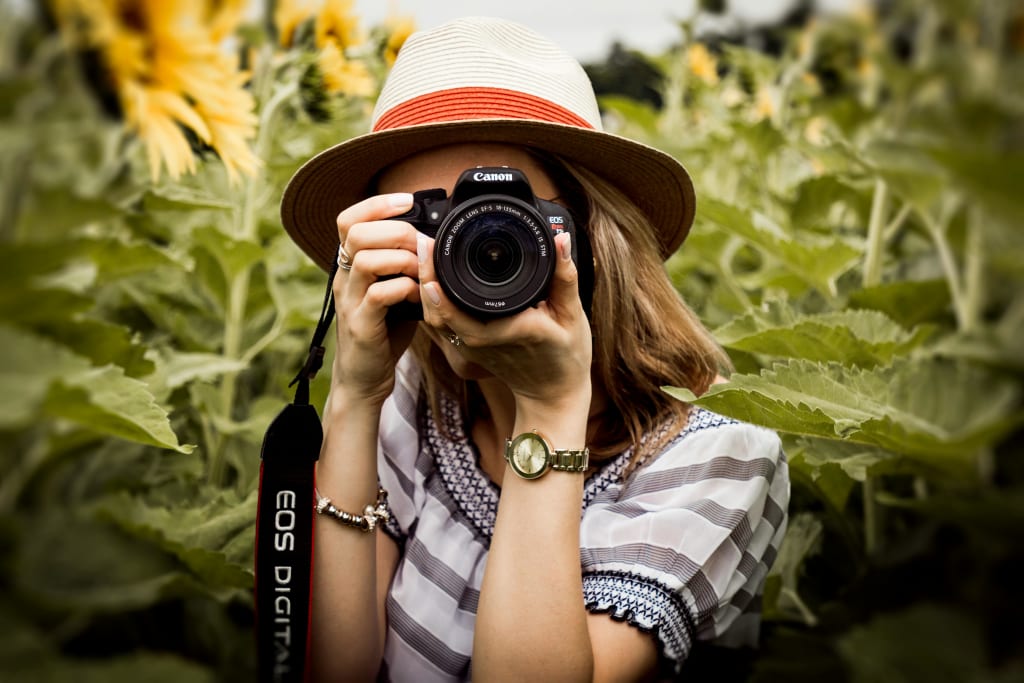The Art and Evolution of Photography
PHOTOGRAPHY TYPES

# The Art and Evolution of Photography
Photography, an art form and technological marvel, has captivated humanity since its inception. From the first black-and-white images to today's high-definition digital masterpieces, photography has not only documented the human experience but also transformed the way we perceive the world. This article explores the history, techniques, and cultural impact of photography, delving into its journey from a scientific curiosity to a global art form.
## The History of Photography
### The Birth of Photography
The origins of photography date back to the early 19th century when inventors and scientists were experimenting with light-sensitive materials. The first successful photograph, known as a heliograph, was created by Joseph Nicéphore Niépce in 1826. This image, titled "View from the Window at Le Gras," required an eight-hour exposure to capture the scene on a pewter plate coated with bitumen.
Following Niépce's pioneering work, Louis Daguerre developed the daguerreotype process in 1839. This method significantly reduced exposure times and produced clearer images on silver-plated copper sheets. Daguerreotypes quickly became popular, making photography accessible to a broader audience.
### The Evolution of Photographic Techniques
#### Calotype and Albumen Prints
In the 1840s, William Henry Fox Talbot introduced the calotype process, which used paper coated with silver iodide to create a negative image that could be used to produce multiple positive prints. This innovation laid the groundwork for modern photographic reproduction.
The albumen print, invented by Louis Désiré Blanquart-Evrard in 1850, further advanced photographic technology. By coating paper with egg white (albumen) and silver nitrate, photographers could produce sharper, more detailed images. Albumen prints became the dominant photographic process in the latter half of the 19th century.
#### Wet and Dry Plate Photography
The wet plate collodion process, introduced by Frederick Scott Archer in 1851, revolutionized photography with its improved clarity and reduced exposure times. This method required photographers to coat, expose, and develop glass plates while they were still wet, making it a cumbersome but highly effective technique.
In the 1870s, Richard Leach Maddox developed the dry plate process, which used a gelatin emulsion to coat glass plates. This innovation allowed photographers to prepare plates in advance and develop them later, greatly enhancing the convenience and flexibility of photographic practice.
### The Rise of Color Photography
While early photography was predominantly monochromatic, the quest for color images began in the mid-19th century. The first successful color photograph, using the three-color method, was produced by James Clerk Maxwell in 1861. However, practical color photography did not become widespread until the early 20th century.
The introduction of the Autochrome process by the Lumière brothers in 1907 marked a significant milestone in color photography. This technique used dyed grains of starch to create color images on glass plates, making color photography more accessible to the public.
Kodachrome, introduced by Eastman Kodak in 1935, further revolutionized color photography with its multi-layered color film. This process produced vibrant, durable color images and became the standard for professional and amateur photographers alike.
### The Digital Revolution
The advent of digital technology in the late 20th century transformed photography once again. The first digital cameras, developed in the 1980s, captured images using electronic sensors instead of film. These early digital cameras were bulky and expensive, but advancements in technology quickly made them more accessible and affordable.
By the 2000s, digital cameras had surpassed film cameras in popularity, offering numerous advantages such as instant image review, easy editing, and the ability to store thousands of photos on a single memory card. The rise of smartphones with high-quality cameras further democratized photography, enabling anyone with a phone to capture and share images instantly.
## The Techniques of Photography
### Composition and Framing
Composition is the arrangement of elements within a photograph. Good composition draws the viewer's eye to the subject and creates a balanced, visually appealing image. Some fundamental principles of composition include:
1. **Rule of Thirds:** Dividing the frame into a 3x3 grid and placing the subject along the grid lines or at their intersections creates a more dynamic and balanced composition.
2. **Leading Lines:** Lines within the image that guide the viewer's eye towards the subject. These can be natural lines like roads, rivers, or architectural elements.
3. **Framing:** Using elements within the scene, such as windows or archways, to frame the subject and draw attention to it.
4. **Symmetry and Patterns:** Incorporating symmetrical elements or repeating patterns can create visually striking images.
### Exposure and Lighting
Exposure refers to the amount of light that reaches the camera's sensor or film. Proper exposure is essential for capturing clear and detailed images. Key elements of exposure include:
1. **Aperture:** The size of the lens opening, which controls the amount of light entering the camera. A larger aperture (smaller f-number) lets in more light and creates a shallow depth of field, while a smaller aperture (larger f-number) lets in less light and increases depth of field.
2. **Shutter Speed:** The length of time the camera's shutter is open, allowing light to reach the sensor. A fast shutter speed freezes motion, while a slow shutter speed can create motion blur.
3. **ISO:** The sensitivity of the camera's sensor to light. A higher ISO allows for shooting in low-light conditions but can introduce digital noise.
Lighting is another crucial aspect of photography. The quality, direction, and intensity of light can dramatically affect the mood and appearance of an image. Photographers often use natural light, artificial light, or a combination of both to achieve the desired effect.
### Post-Processing and Editing
Post-processing refers to the adjustments and enhancements made to a photograph after it has been captured. With the advent of digital photography, editing has become an integral part of the photographic process. Common post-processing techniques include:
1. **Cropping:** Adjusting the composition by removing unwanted parts of the image.
2. **Exposure Adjustment:** Correcting underexposed or overexposed areas to achieve a balanced exposure.
3. **Color Correction:** Adjusting the white balance and color tones to ensure accurate color representation.
4. **Sharpening and Noise Reduction:** Enhancing image clarity and reducing digital noise.
5. **Creative Effects:** Applying filters, textures, and other artistic effects to create a unique look.
## The Cultural Impact of Photography
### Documenting History
Photography has played a vital role in documenting historical events and preserving memories for future generations. Iconic images, such as the raising of the American flag at Iwo Jima or the fall of the Berlin Wall, have become symbols of pivotal moments in history.
Photojournalism, the practice of using photographs to tell news stories, has brought the realities of war, social injustice, and human suffering to the forefront of public consciousness. Notable photojournalists like Robert Capa, Dorothea Lange, and James Nachtwey have captured powerful images that have influenced public opinion and spurred social change.
### Art and Expression
Photography is not only a tool for documentation but also a powerful medium for artistic expression. Photographers like Ansel Adams, Henri Cartier-Bresson, and Cindy Sherman have pushed the boundaries of the art form, exploring themes of nature, human emotion, and identity through their work.
The accessibility of photography has democratized art, allowing people from all walks of life to create and share their vision. Online platforms and social media have provided photographers with unprecedented opportunities to showcase their work to a global audience.
### Social Media and the Digital Age
The rise of social media platforms like Instagram, Facebook, and Snapchat has transformed photography into a ubiquitous part of daily life. Millions of images are shared online every day, documenting everything from personal milestones to global events.
Social media has also given rise to new genres of photography, such as selfies, food photography, and lifestyle photography. These platforms have created a space for photographers to connect with audiences, build their brands, and even monetize their work.
### Ethical Considerations
The proliferation of photography in the digital age has raised important ethical questions. Issues such as privacy, consent, and the manipulation of images have become increasingly relevant. Photographers and audiences alike must navigate the balance between creative expression and ethical responsibility.
### The Future of Photography
As technology continues to advance, the future of photography holds exciting possibilities. Emerging technologies such as artificial intelligence (AI), augmented reality (AR), and virtual reality (VR) are poised to revolutionize the way we capture and experience images.
AI-powered cameras and software can automatically enhance images, recognize scenes, and even generate realistic photos from scratch. AR and VR technologies offer immersive experiences, allowing viewers to step inside a photograph and explore it from different angles.
Moreover, the increasing integration of photography with other forms of media, such as video and animation, is blurring the lines between traditional photography and new visual art forms.
## Conclusion
Photography has come a long way since its inception, evolving from a scientific experiment to a powerful tool for documentation, art, and communication. Its ability to capture and convey the essence of a moment has made it an indispensable part of human culture.
As technology continues to evolve, so too will the art of photography. With each new advancement, photographers will have even greater opportunities to push the boundaries of creativity and expression, continuing to shape the way we see and understand the world.
About the Creator
Enjoyed the story? Support the Creator.
Subscribe for free to receive all their stories in your feed. You could also pledge your support or give them a one-off tip, letting them know you appreciate their work.





Comments
There are no comments for this story
Be the first to respond and start the conversation.